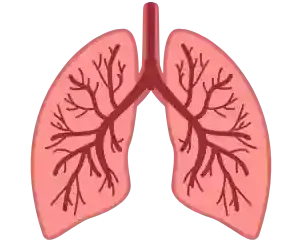Discover the ultimate Boxing Lung Test, designed to assess and monitor your lung capacity. Stay informed and take control of your respiratory health today.
Disclaimer: Do not use this test if you have breathing problems such as asthma and the flu. Also, if you drink alcohol or smoke in everyday life, please consult a medical professional.
Boxing Lung Test
Test your lungs with this online inspection tool
Hold your breath to measure your lung capacity

Leaderboard
| # | Time (s) |
|---|---|
| 1 | 0.0 |
| 2 | 0.0 |
| 3 | 0.0 |
| 4 | 0.0 |
1. What is the Boxing Lung Test?
The Boxing Lung Test is a fitness assessment designed to evaluate lung capacity, endurance, and cardiovascular efficiency. It often involves performing boxing-inspired exercises like punching combinations or rapid movements while maintaining proper breathing techniques. This test is widely used in fitness training to understand stamina and breathing control during intense physical activities.
2. Why is the Boxing Lung Test popular in fitness programs?
The test mimics high-intensity activities, making it an excellent tool for athletes, especially boxers, to gauge their physical condition. It helps in improving lung function, enhancing stamina, and identifying areas for development in cardio endurance.
3. Can anyone perform the Boxing Lung Test?
Yes, most people can perform the Boxing Lung Test, provided they are in general good health. However, it is advisable for beginners to start with a less intense version and gradually build up intensity as their fitness improves. If you have concerns about your fitness level, consult a fitness trainer before attempting.
4. What kind of exercises are included in the test?
The Boxing Lung Test usually incorporates dynamic movements such as shadow boxing, rapid punches, jumping jacks, or other cardio-intensive exercises. These activities are designed to push your lungs and cardiovascular system while emphasizing controlled breathing.
5. How long does the Boxing Lung Test take?
The duration of the test depends on the intensity level and fitness goals. On average, it can last between 5 to 15 minutes. Some advanced variations may extend beyond this timeframe for more experienced individuals.
6. What benefits can I expect from performing the Boxing Lung Test regularly?
Performing this test regularly can lead to numerous benefits, including:
Improved lung capacity
Enhanced cardiovascular endurance
Better breathing control during physical activities
Increased stamina and energy levels
A deeper understanding of personal fitness limits and progress
7. Do I need any special equipment for the Boxing Lung Test?
No special equipment is required for a basic Boxing Lung Test. However, some variations may involve using a punching bag, gloves, or a timer for better accuracy in measuring performance.
8. How can I prepare for the Boxing Lung Test?
Preparation involves:
Warming up with light cardio exercises to avoid strain.
Practicing deep and controlled breathing techniques.
Staying hydrated and wearing comfortable workout gear.
Setting a timer to track your performance effectively.
9. Are there any safety tips to keep in mind during the test?
Yes, here are a few safety guidelines:
Start at a moderate pace to avoid overexertion.
Focus on maintaining proper form to prevent injuries.
Take breaks if you feel fatigued or short of breath.
Stop immediately if you experience discomfort or dizziness.
10. How often should I perform the Boxing Lung Test?
This test can be performed once or twice a week as part of a fitness routine. Overdoing it may lead to fatigue, so allow ample recovery time between sessions.
11. Can the Boxing Lung Test help track fitness progress?
Absolutely! By noting improvements in endurance, breathing control, or exercise duration over time, you can effectively track your fitness progress and set new goals.
12. Is the Boxing Lung Test suitable for beginners?
Yes, beginners can perform the Boxing Lung Test with modifications. Starting at a slower pace with simpler exercises can help build confidence and stamina before progressing to more intense versions.
13. What should I do after completing the Boxing Lung Test?
After completing the test, cool down with light stretching and deep breathing exercises to relax your muscles and regulate your heart rate. Hydrating and reflecting on your performance can also help in planning improvements for future tests.
14. How does the Boxing Lung Test differ from other fitness tests?
Unlike traditional fitness tests that might focus on static measures, the Boxing Lung Test emphasizes dynamic, full-body movements and breathing control, offering a unique way to evaluate both cardio endurance and lung capacity simultaneously.
15. Can children perform the Boxing Lung Test?
Children can participate in a simplified version of the test under supervision. Ensure the exercises are age-appropriate and not overly strenuous for their developmental stage.
